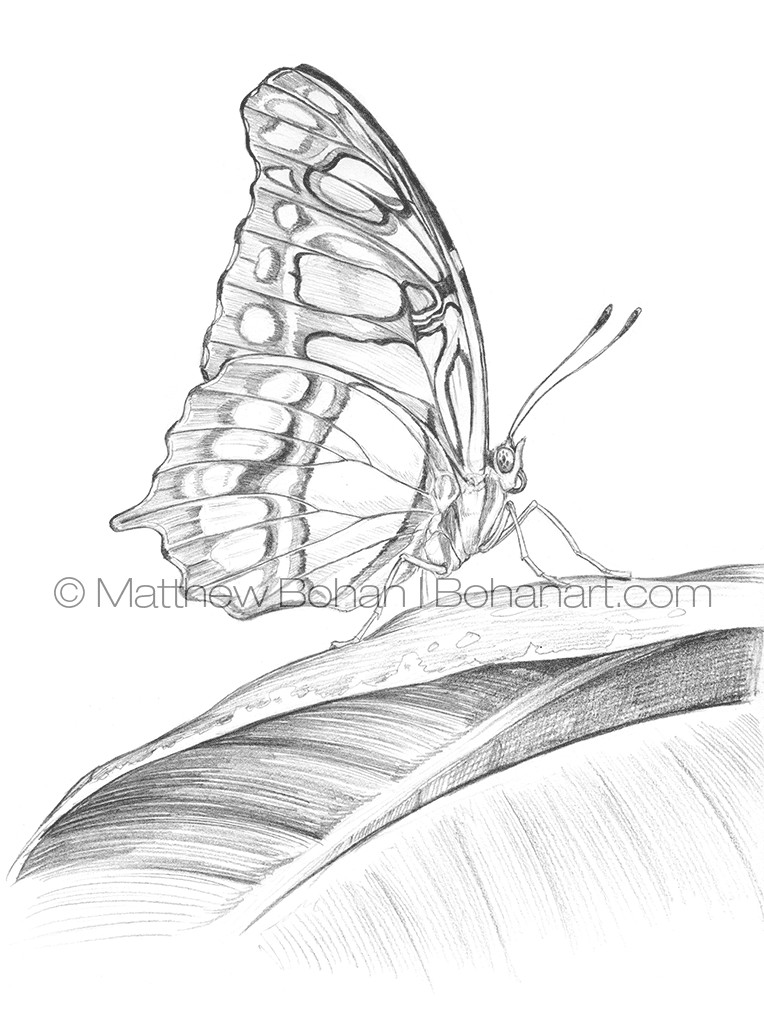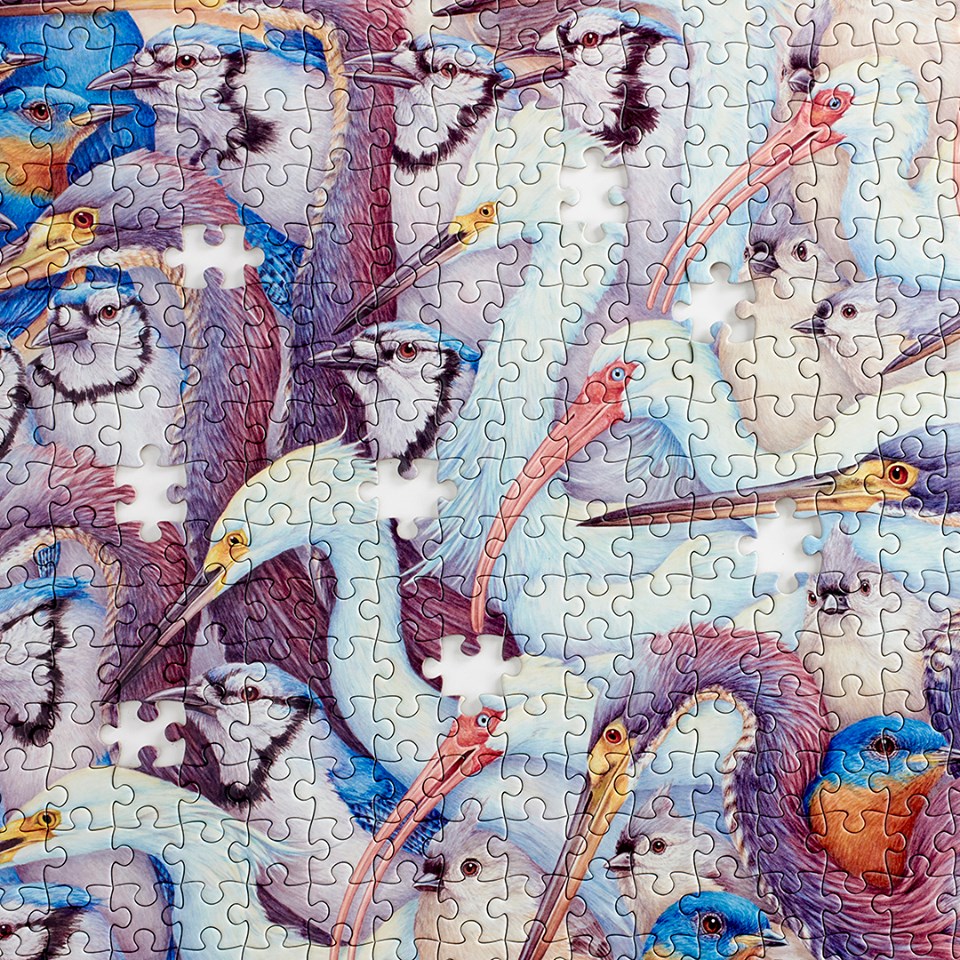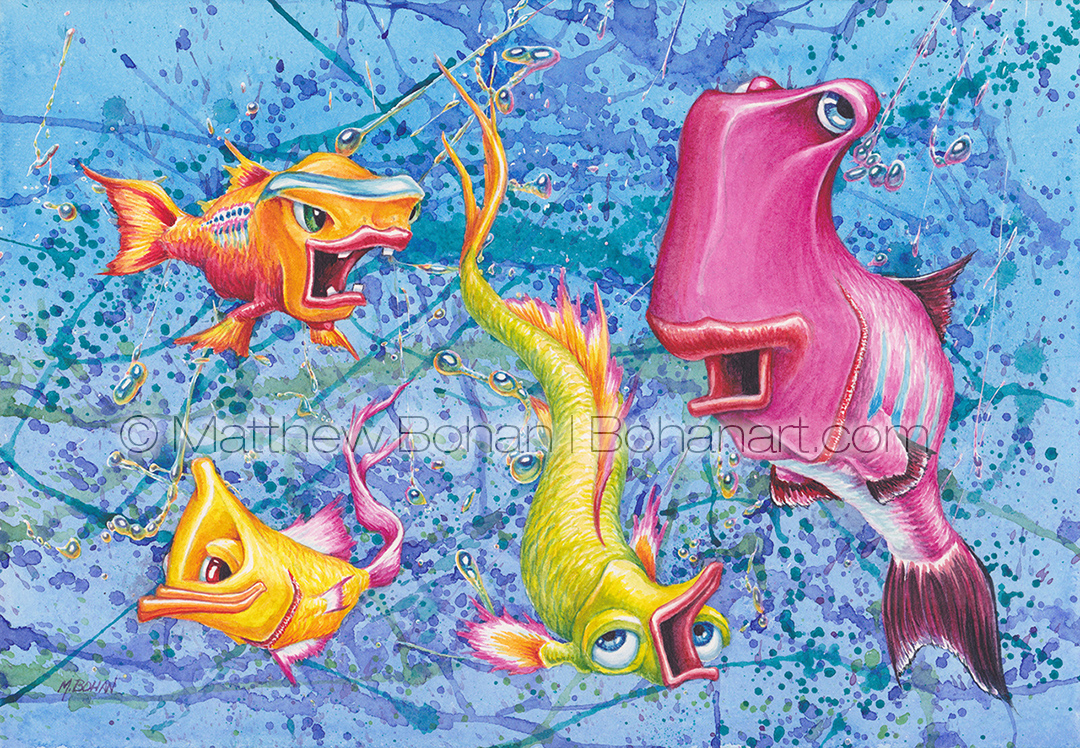Malachite Butterfly Pencil Sketch p90
Tan Jumping Spider
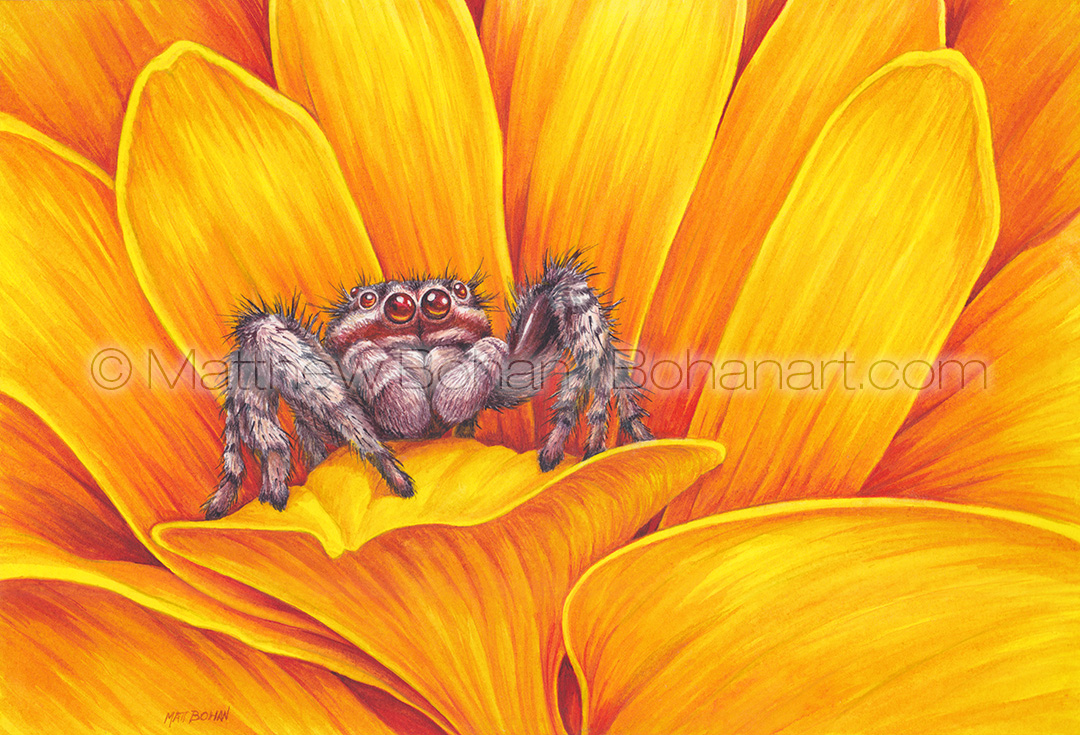
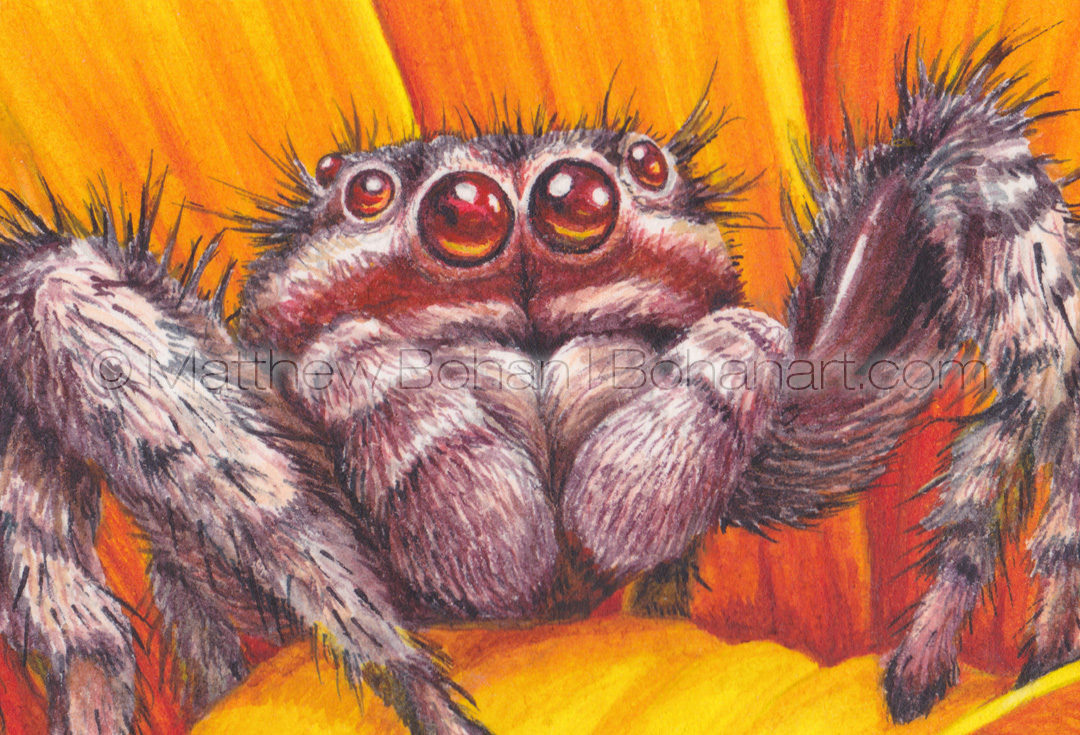
Tan Jumping Spider (Platycryptus undatus)
I love these curious little jumping spiders! I’ve painted many different types in the past, but this is new to the collection. The Tan Jumper is one of the more common species found in Michigan. Globally they have a huge distribution from Canada all the way through Central America. Often, they cling to vertical surfaces while hunting. If your hands are free of any insect repellant, it’s fun to handle them gently. They will often look you right in the eye, or camera lens, with a curious look about them.
Sorry, I have to go science nerd for a minute: Their Latin name is Platycryptus undatus; platy means flat, cryptus is hidden, and undatus means wavy edged. So it is the “wavy edged, flat, hiding jumping spider,” which really is a terrific name. They definitely are flattened dorsoventrally, which helps them hide under bark. Undatus refers to the broken wavy pattern on their backs, which makes them all but invisible on tree bark, rocks and lichens. They do show up pretty darn well on vinyl siding though! That’s often where I find them for photographs.
Around the house I often call these mustache jumpers because of the spectacular pedipalps that are often held in front like a big, brushy mustache.
Flowers aren’t really the typical hunting place for these guys, but it makes for a striking image. I know lot of people HATE spiders, mostly out of fear. Therefore, I often put them on something that might be appreciated by those who are spider-averse, hoping to counter their phobic tendencies.
Black and White Warbler Pencil Sketch p90
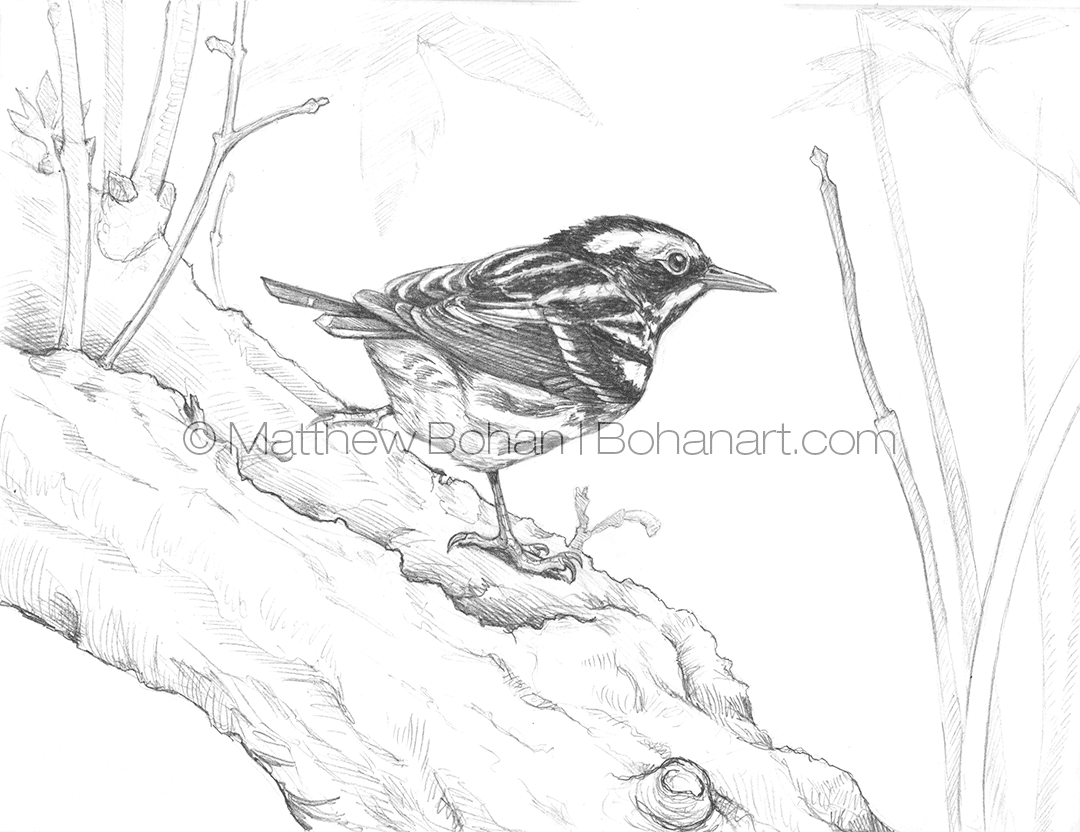
Magee Marsh is a great place to see migrant warblers in the spring. Our family tries to go there in the spring, but we also try to avoid the “Biggest Week of Birding” that overcrowds the place.
I’m so behind on posting art! This sketch is from photos I took at Magee in the spring 0f 2018. I drew it while on an airplane heading back from the Everglades in February of this year (2019). Now you see just how backlogged I am. I’m creating a lot of art, but most of it has been medical work that pays the bills. I’m still painting but not posting. Something had to be sacrificed.
Sketching on airplanes is a great way to make use of “dead” time. There are a few drawbacks. Turbulence can definitely be an issue. If it starts getting bumpy, I’ll take a break. While doing this sketch I experienced one of the other hazards of airplane drawing. On my right was my son Timmy, who took up only 2/3 of his seat and was occupied mostly with staring out the window and enjoying the thrill of that view. It was one of his first times in a plane. On my left side was a guy I’ll refer to as “Eustace Elbows.” Eustace was apparently an attorney from Ohio… at least that is what I gathered from an embroidered patch on his shirt, a matching bag saying Ohio State Bar Association as well as a binder, pens and anything else that could bear an image. Subtle. He may also have had a tattoo of the same logo somewhere, but I wasn’t going to look for it. Eustace was a “type.” In his early early 60’s, he had an overly-manicured beard and an under-manicured attitude. He was tall and not necessarily overweight, but his poundage was distributed unevenly. He may or may not have DNA with Gummi Bear. After taking over an entire overhead with his massively oversized carry-on and winter coat, he slammed its door shut to claim it as his own. At least he didn’t scent mark it while I was watching. Afterwards, Eustace slithered into the aisle seat and gave Timmy and I a dismissive look. I was thinking about the inevitable arm rest war to come.
I’m by nature not someone who wants a fight, so I figure I’d let Eustace take the armrest. Now I’ve been seated next to some large passengers over the years, and sometimes they spill over into your personal space. There isn’t a heck of a lot they can do about that in the period of a flight, so you live with it. This is an advantage of not being very big or tall. Now Eustace wasn’t that large, but he almost immediately went beyond the arm rest and spent the rest of the flight with his elbow rubbing against me. Eustace was not only an attorney, he was a Space Invader. Drawing was going be a bit difficult with him pressing on me. After about an hour of this, I noticed that I had slid over about four inches in my seat to compensate for his greed of personal space, and yet he still was grinding his elbow into my arm. Possibly he didn’t get enough physical contact while he was a child?
My back was starting to bother me from leaning over, so at an opportune moment I straightened up to normal stature, reclaiming at least a small portion of my personal space. Although he made no outward notice, still way past the armrest, he now was rubbing against my arm even more. When I’d move my arm, his elbow literally was in my ribs. There were definitely some social skills lacking there. I thought about ways to get a little space back. Most I shouldn’t mention here. So, yeah… as a drawing space, an airplane seat isn’t always the ideal studio.
Great Blue Heron Mural
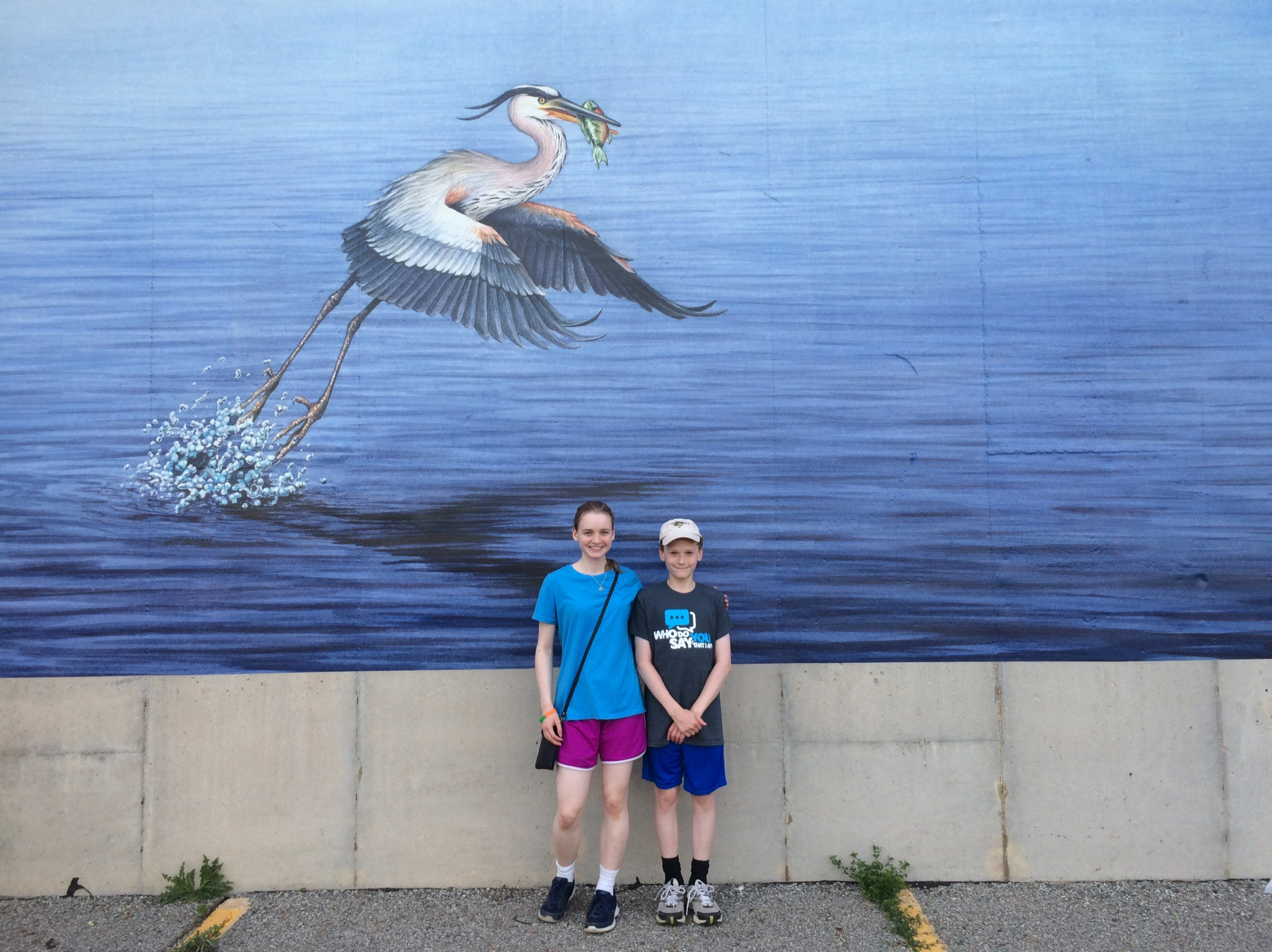
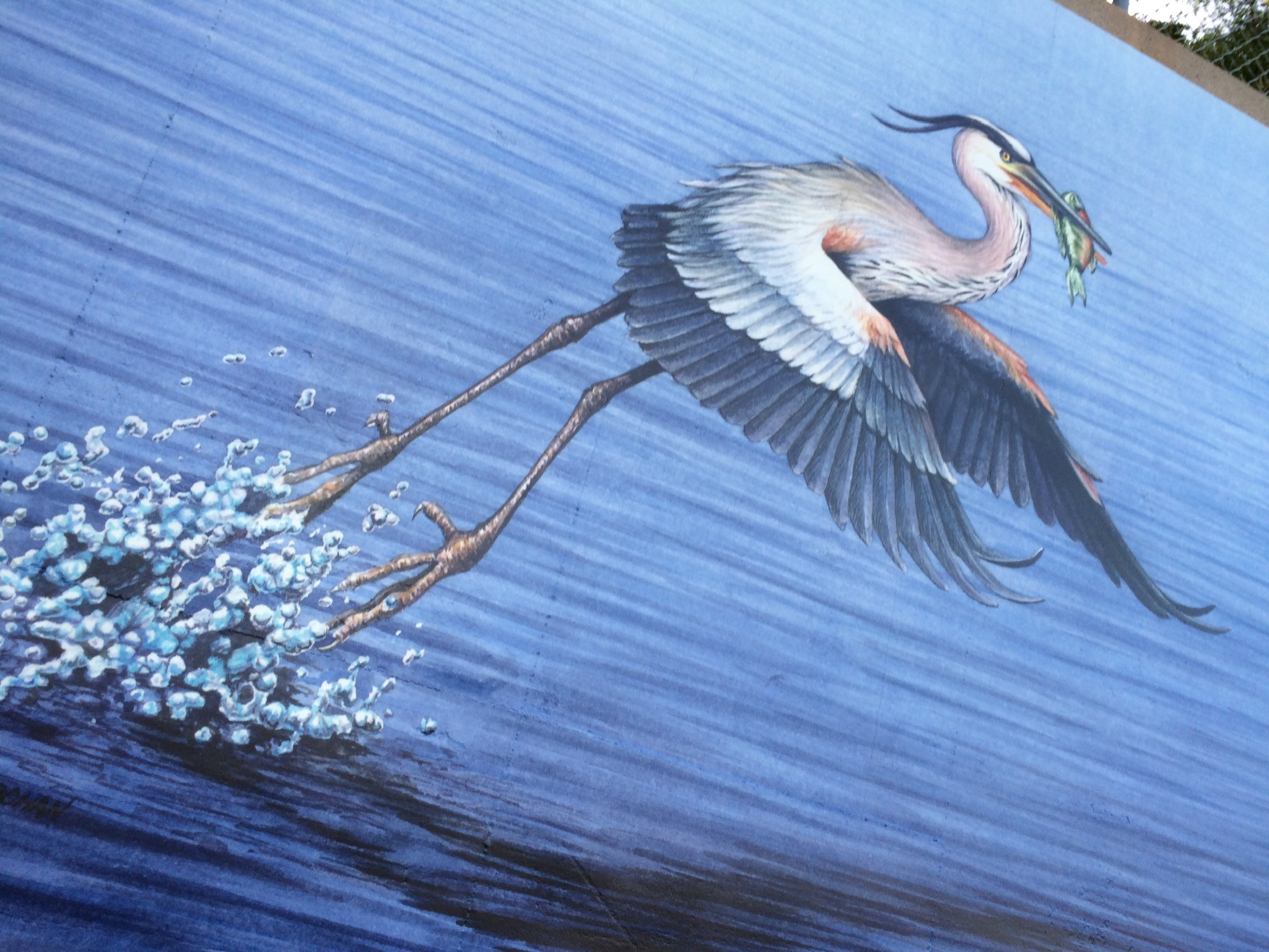
Now that is big! This mural was made from my watercolor painting Great Blue Heron Taking Flight. The original commissioned piece is 9 x 24 inches and was completed a few years ago. Lansing’s Art in the Wild recently had a call for entries for water-related art pieces. Their plan is to create murals that will inspire a public passion to protect water resources. So far three murals have been installed as part of the Murals on Frandor project. Lansing locals can head over to Frandor Shopping Center and have a peek anytime. The murals are just north of JoAnn Fabrics. The unveiling ceremony will be at noon on Wednesday, July 10, 2019 near the murals.
The printing company did an incredible job making and applying the murals. It’s hard to believe that the original was only 9 x 24 inches and the mural is 8 x 15 feet!
Early Eastern (Rufous-sided) Towhee Transparent Watercolor and Time-lapse
This painting of an Eastern Towhee is a little unusual. Snow isn’t the first thing I normally associate with this species. For a number of years a male towhee would show up in our yard a few weeks before I’d see any other reports of Eastern Towhee on eBird. He’d hang around in the hedge and pop under the feeders to eat what was dropped by the other birds and not yet harvested by juncos.
After a few weeks the rest of the towhees would hit the area, by which time he seemed to have already established his territory. Migrating a little early carries its risks, and one year that poor guy got hit by a late snowstorm that delivered a few inches of wet, clumpy snow. I got a lot of great photos of American Robins and our towhee friend fluffed up and looking a bit miserable. I hope they were thinking warm thoughts. Fortunately, they all seemed to survive the snow just fine.
I remember reading a quote from a landscape/wildlife photographer who said bad weather can make for great photos. I think that makes sense. It certainly gives things a different look when the lighting and settings are changed up.

New: Whites and Blues Puzzle!
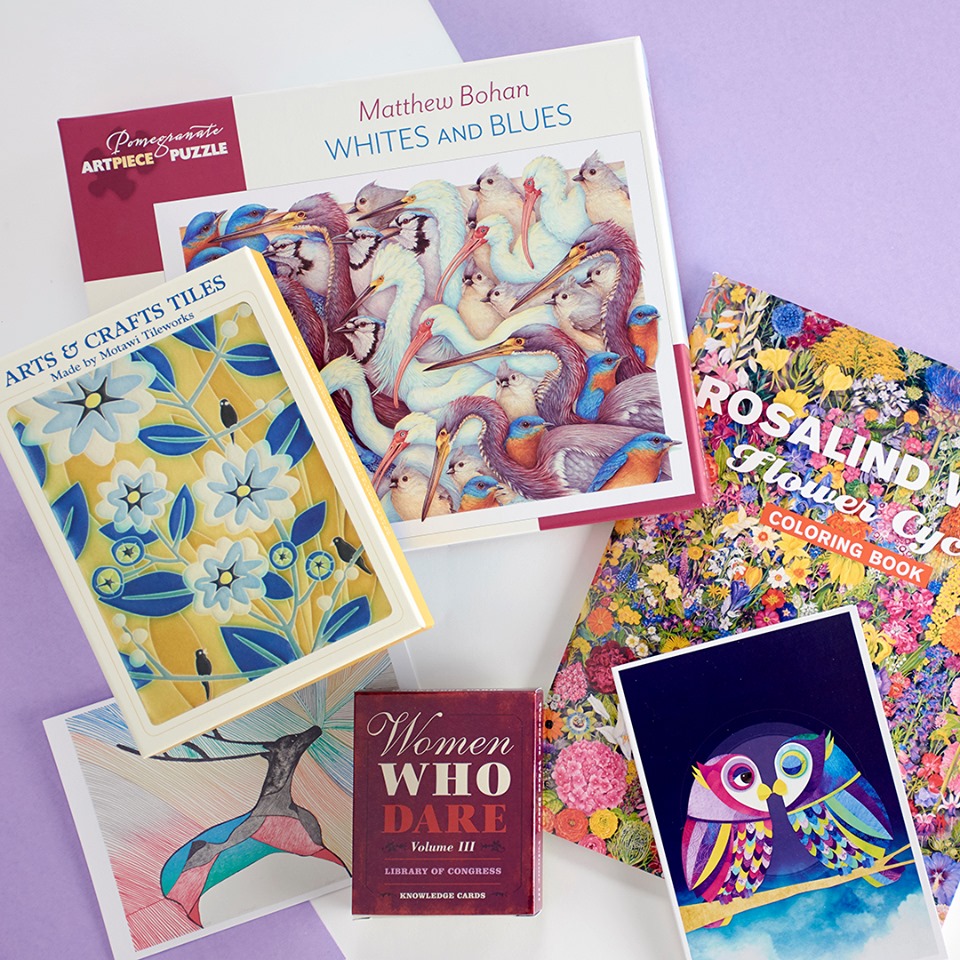
I’m pleased to announce that a 500-piece puzzle featuring one of my watercolors has just been published by Pomegranate Press! You can get it from Pomegranate Press or Amazon.
I found out about this months ago but didn’t want to breathe a word of it until getting a copy myself and seeing it listed online. It was posted for pre-order on both sites early last month, but the “big day” didn’t occur until May 29. That’s when the box arrived from Pomegranate Press, one day before the puzzle was listed as available online.
My family and friends are really excited about this, and I have to admit to being enthused as well. A real bonus is that the finished puzzle is the exact dimensions of the original watercolor. Pomegranate did a great job with the color printing, so once completed, it should be like having the original right in front of you—provided that you cut the original into 500 pieces and reassembled it! I think it should be a fun challenge.
More info on the original can be found here, and below is a video of the painting in progress.
Gray Treefrog Pencil Sketch p89
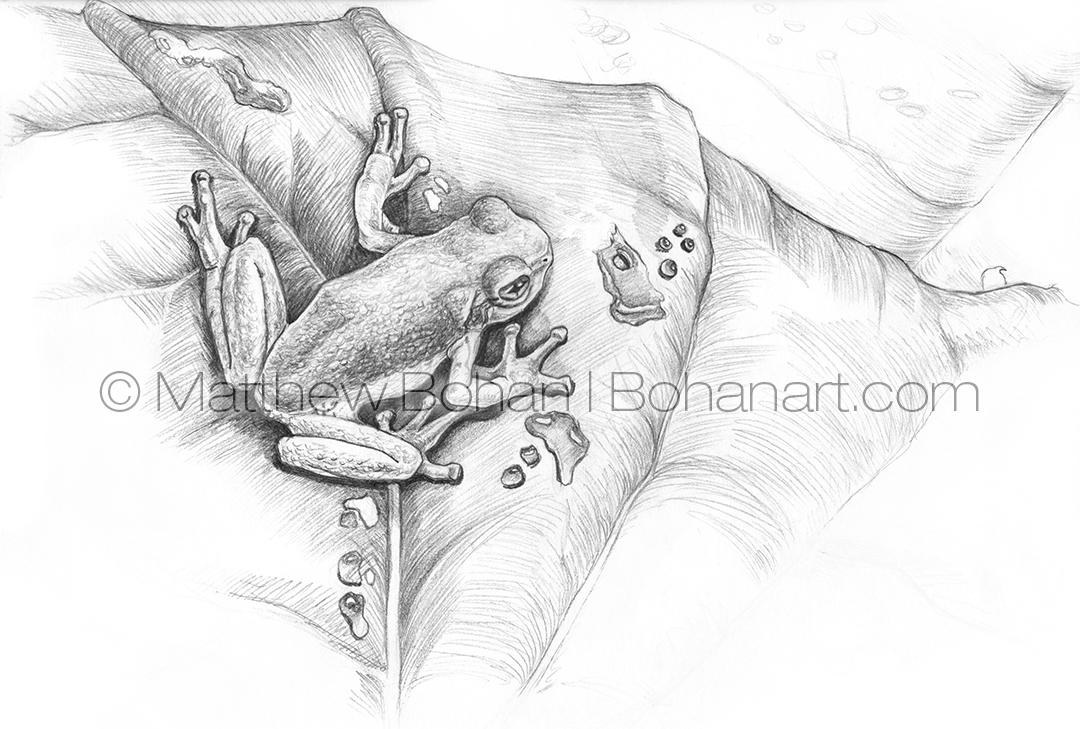
Gray Treefrogs frequent our yard. Hearing their call always puts a smile on my face.
These frogs like selecting protected areas to hide during the day. A favorite spot is the space between the top of our shed door and the drip cap above it. It is a well-protected space from most predators, but there is a downside—humans! If you want to go into the shed, you have to carefully check to be sure a tree frog (or two) isn’t going to get hurt when you open the door. If you …. s l o w l y … open the door and then gently easy them under the drip cap they will grudgingly move onto the siding of the shed. Of course, it takes me an hour to mow, so by the time I’m done, they are back to hiding on the top of the door and the slow process begins again! It is a bit of a pain, but having some classy amphibians in the backyard is well worth a little lost time.
Another favorite hiding spot is an old wren box. Seeing a frog pop its head out is always fun. They also like to disappear into the tubes of our wind chimes. Talk about a safe place to hide; that’s like having a suit of armor! They seem to rethink the wisdom of that hiding place when the wind picks up and the chimes actually ring. Then a little guy comes shooting out like the world is going to end. We’ve joked about using the tube as a giant blow gun to shoot the frog across the lawn, but you’d need some massive lungs for that job. (As if!)
Fishy Four Transparent Watercolor and Time-lapse
Crested Coua Pencil Sketch p88
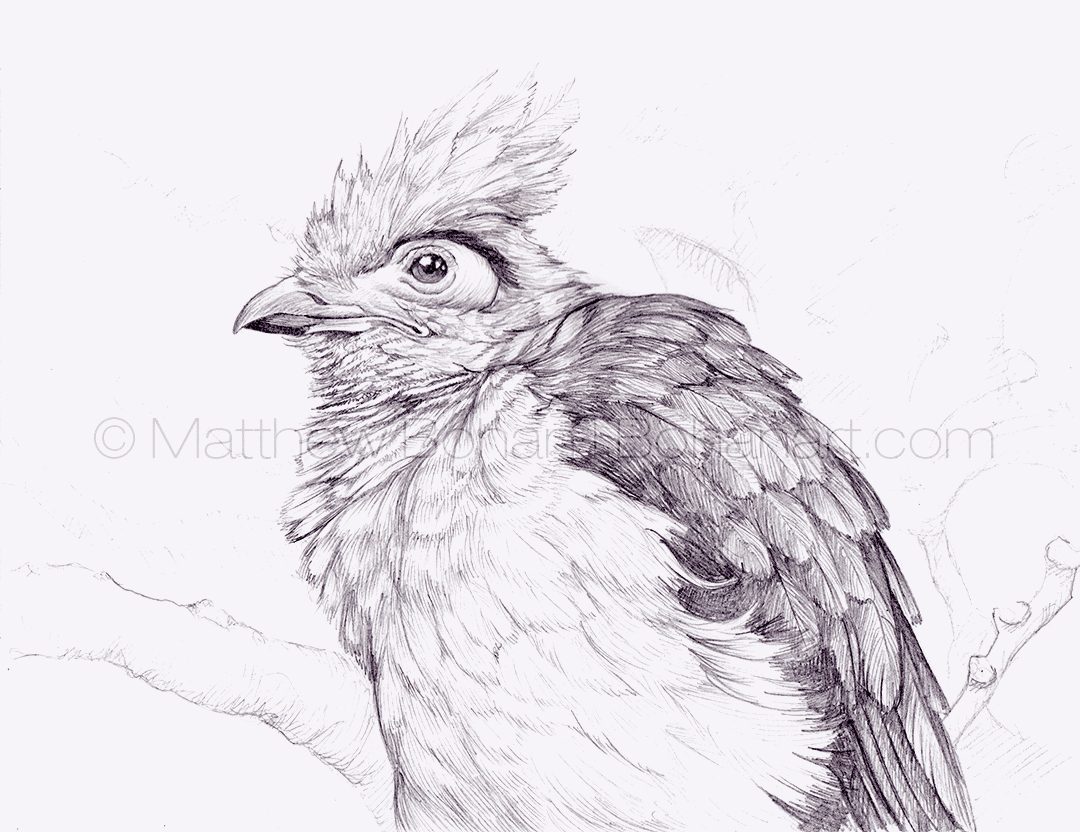
Crested Coua are spectacularly beautiful birds from Madagascar. In this case it was from the Toledo Zoo’s bird house. It fails a little as a pencil drawing because you miss the spectacular purples, pale blues and aqua colors around the eyes. This bird has a perfectly thought out palette. Eventually I’ll do a watercolor to show that.
Getting bird photos at zoos is fun. I tend to use a zoom lens with a 100-400mm range and always bring along a flash with a Fresnel attachment in case I need to add some light. Extension tubes can be handy if specimens are too close to focus on otherwise. Some zoos are friendlier to photographers than others.
Shooting pictures through glass always leaves a lot to be desired. Often, I don’t even bother if the glass is dirty, thick or at too much of an angle. Wires, bars and fences are a pain as well but can sometimes be worked around. If you are close enough to thin wires, you can often focus right through them with a low f-stop, and they barely show up. The best-case scenario are flight rooms where you walk into the “cage” so there are no obstacles to shoot through. On the down side, sometimes the birds anoint you with some guano. I think that’s a small price to pay for some good photos to paint from. I suppose that’s one of many reasons zoos don’t place visitors in a large flight room with herons. Having 12 ounces of intestinally processed fish-pulp blasted in your face wouldn’t be so great.
One drawback of zoos is that the specimens aren’t always ideal in plumage or behavior. Sometimes the animals are old, beaks and toenails need trimming or feathers may be damaged from confined quarters. Sometimes behaviors are “off.” Diet can influence coloration, while backgrounds and vegetation don’t always match the animals’ natural environment. I typically use multiple photos as references for each of my paintings in order to get the information right. I also research what plants are typical for each bird. Blowing backgrounds out of focus often helps. One can’t be an expert on everything, but getting the general look and feel is important.
Fox Sparrow and Frost’s Bolete Transparent Watercolor and Time-lapse
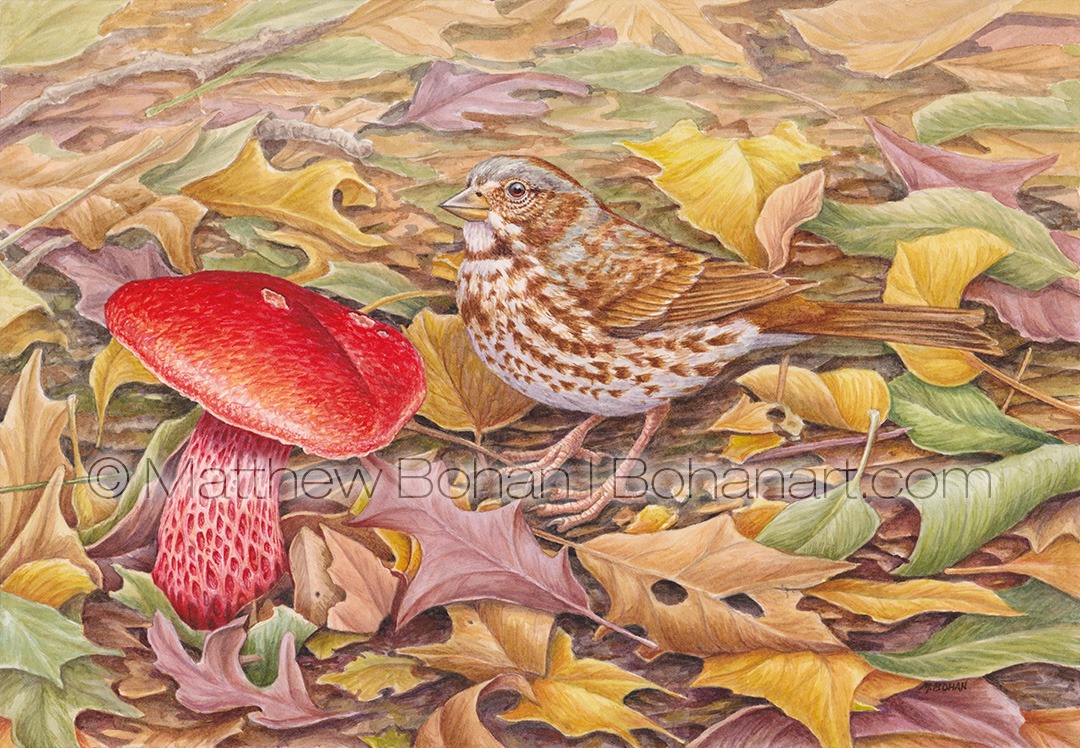
Fox Sparrows are beautiful and entertaining birds. I tend to see them only in the spring and fall, but when I do get a peek at them, I always get excited. They are chunky birds with beautiful color and a fun habit of kicking up leaf litter in search of food.
The other star of the show in this painting is an example of Frost’s Bolete. It is a striking mushroom that fruits in the late summer to early autumn. I came across a load of these while mountain biking at a local park. I went back with a bunch of camera gear and my son Timmy, who shares my passion for mushrooms. Combining photos of the Fox Sparrow with the Bolete seemed natural.
While in grad school at St. Bonaventure University, I took mycology during the summer. It was the driest summer I could remember in southwestern New York. Field trips looking for fungus specimens were pretty sparse because things were so arid. Eventually we had a week of torrential downpours, restoring the water table and bringing the mushrooms bursting to life.
When my wife and I were first dating, many of our outings were hikes at the Chagrin Nature Preserves outside of Cleveland. We were always in search of birds but often ended up captivated by mushrooms we’d find along the way. These days Timmy is better at field identification than I am. He has a large collection of photos from our field trips and has even done spore prints to identify tricky specimens.
I’m definitely a bit bird-centric when I pick locations for outings, but often it is the plants, mushrooms, insects, spiders, amphibians and reptiles that steal the show. It helps to learn as much as possible about all those other things. That way, even if the birds are slow, there is almost always something fascinating nearby worth investigating!
Years ago I did a series of frog and salamander paintings that also feature mushrooms. Not surprisingly, fungus is under-represented in the art world. It’s great to show people something they either haven’t seen before or have totally overlooked.

